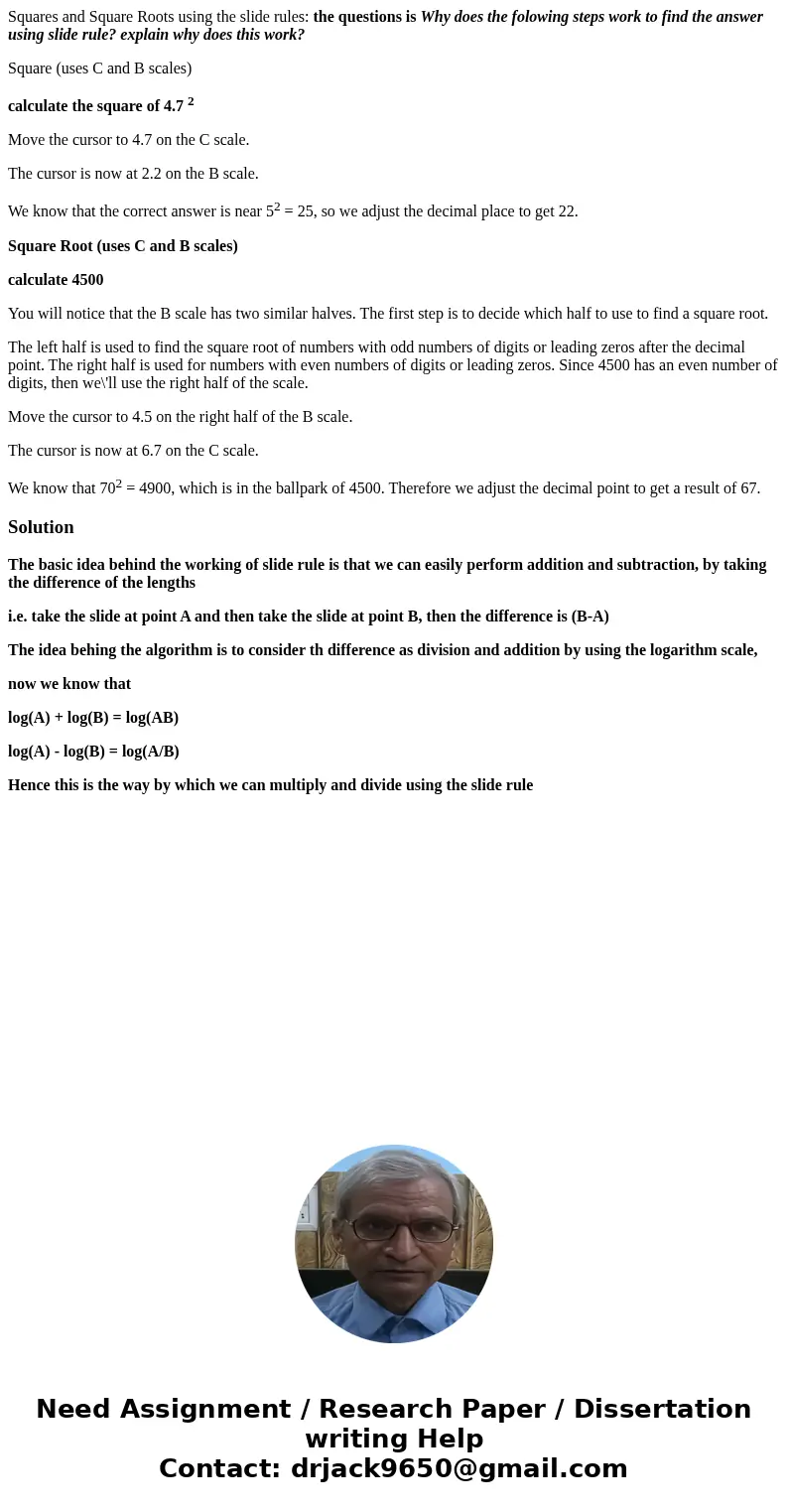Squares and Square Roots using the slide rules the questions
Squares and Square Roots using the slide rules: the questions is Why does the folowing steps work to find the answer using slide rule? explain why does this work?
Square (uses C and B scales)
calculate the square of 4.7 2
Move the cursor to 4.7 on the C scale.
The cursor is now at 2.2 on the B scale.
We know that the correct answer is near 52 = 25, so we adjust the decimal place to get 22.
Square Root (uses C and B scales)
calculate 4500
You will notice that the B scale has two similar halves. The first step is to decide which half to use to find a square root.
The left half is used to find the square root of numbers with odd numbers of digits or leading zeros after the decimal point. The right half is used for numbers with even numbers of digits or leading zeros. Since 4500 has an even number of digits, then we\'ll use the right half of the scale.
Move the cursor to 4.5 on the right half of the B scale.
The cursor is now at 6.7 on the C scale.
We know that 702 = 4900, which is in the ballpark of 4500. Therefore we adjust the decimal point to get a result of 67.
Solution
The basic idea behind the working of slide rule is that we can easily perform addition and subtraction, by taking the difference of the lengths
i.e. take the slide at point A and then take the slide at point B, then the difference is (B-A)
The idea behing the algorithm is to consider th difference as division and addition by using the logarithm scale,
now we know that
log(A) + log(B) = log(AB)
log(A) - log(B) = log(A/B)
Hence this is the way by which we can multiply and divide using the slide rule

 Homework Sourse
Homework Sourse